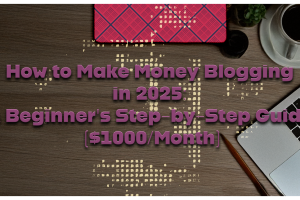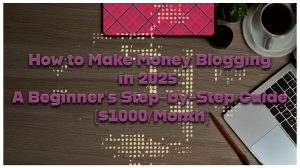Email marketing has long been a crucial component of the digital marketing landscape. It’s a powerful tool enabling marketers to reach target audiences, increase engagement, and increase conversions. However, as the marketing landscape evolves, staying current on the latest trends and insights is essential to benefit the most from your email marketing campaign efforts. In this article, we’ll explore the statistics and insights that will shape the world of email marketing in 2023. We’ll look at everything from email marketing automation to designing effective email campaigns and provide you with the tools you need to succeed.
Email Marketing Statistics and Trends for 2023.
Email marketing is a dynamic field that’s constantly evolving. In 2023, we expect to see several trends and statistics that will shape the industry. According to recent studies, personalization will continue to be a key trend in email marketing. Personalized emails have shown a 29% higher open rate and a 41% higher click-through rate than generic emails; this means that marketers/businesses that prioritize personalization in their email campaigns are more likely to see success.
Another trend they expect to continue in 2023 is email automation. Automation enables marketers to send targeted messages to their subscribers based on their behavior and preferences; this saves time and also helps marketers/businesses provide a more personalized experience for their subscribers. According to recent studies, automated emails have an open rate of 45.7%, compared to 18.8% for non-automated emails. Marketers/businesses using automation in their email campaigns are likelier to see higher engagement rates.
Lastly, mobile optimization will continue to be a crucial aspect of email marketing in 2023. With many more people accessing their emails on mobile devices, optimizing them for mobile viewing is essential. Studies show that 81% of people check their email on their mobile devices, and 75% of Gmail users access their accounts through mobile devices. Marketers/businesses that don’t optimize their emails for mobile viewing risk losing engagement and conversions.
Why Email Personalization is Important and Things to Consider
Personalization in email marketing is a powerful tool that enables marketers/businesses to connect with their customers more meaningfully. With the increasing volume of emails sent and received daily, it is more important to offer your subscribers a unique experience. Email marketing personalization allows you to tailor the messages sent to recipients based on their preferences, behavior, and past interactions with your brand. Doing so can increase engagement and open and click-through rates and ultimately drive more conversions.
Building Trust
A key benefit of email marketing personalization is that it helps to build trust and loyalty with your audience. When subscribers receive emails that speak directly to their interests and needs, they are more likely to feel valued and connected to your brand; this can help increase brand awareness, customer retention, and advocacy. Personalization can also help to reduce email fatigue and unsubscribes, as subscribers are less likely to tune out or feel overwhelmed by irrelevant messaging.
Collecting and Analyzing Data
To implement effective personalization in email marketing, collecting and analyzing data about your subscribers is essential; this can include demographic information, purchase history, website activity, and email engagement metrics. Using this data, you can segment your audience into different groups and create targeted campaigns addressing specific needs or pain points. Personalization can take many forms, from addressing subscribers by name, recommending products based on browsing history, and sending birthday or anniversary messages.
Being Transparent About Data Collection
While personalization in email marketing can be a powerful tool, using it wisely and ethically is vital. Subscribers may feel uncomfortable or even violated if they perceive that their personal information is being misused or shared without consent. You must be transparent about your data collection and usage policies and allow subscribers to opt-out or update their preferences at any time. By respecting your subscribers’ privacy and preferences, you can build a trusting and long-lasting relationship with your audience.
How to Personalize Your Email Marketing Campaigns and What You Need to Consider
Continue reading to discover how to personalize your email marketing strategies. The following sections include:
- Email marketing services and tools.
- Email marketing automation.
- Designing effective email campaigns.
- Building an Email List.
- Email deliverability and spam filters.
- Best practices for email marketing in 2023.
- Email marketing mistakes to avoid.
Email Marketing Services and Tools.
Email marketing services and tools are essential for marketers/businesses that want to create successful email campaigns. You can find many options available; each has its unique features and benefits. Here are a few popular options:
- Mailchimp: Mailchimp is one of the most reputable email marketing services that offers many features, including email automation, landing pages, and audience insights. It’s designed for simplicity and offers a free plan suitable for small businesses.
- Constant Contact: Constant Contact is a popular email marketing service; they also offer a variety of features, including email automation, customizable templates, and analytics. Constant Contact also provides a free trial, plus a range of price plans that suit different business needs.
- ConvertKit: ConvertKit is another popular email marketing service that’s designed specifically for bloggers, course creators, and other creators. It offers features such as email automation, landing pages, and audience segmentation. It’s also known for its user-friendly interface and excellent customer support.
Email Marketing Automation
Email marketing automation allows marketers/businesses to send targeted messages to their subscribers based on their behavior and preferences; this saves time and helps marketers/businesses to provide a more personalized experience for their subscribers. Here are some useful tips for using email marketing automation effectively:
- Use automation to send targeted messages based on subscriber behavior. For example, you could automate a follow-up email to a subscriber that clicked on a particular link in your last email.
- Segment your audience to ensure that your automated emails are targeted and relevant. You could segment your audience based on factors such as location, interests, or behavior.
- Use triggered emails to send timely and relevant messages to your subscribers. For example, you could automate a welcome email to new subscribers or a birthday email to subscribers on their birthday.
Designing Effective Email Campaigns
Designing effective email campaigns is crucial for marketers/businesses that want to engage their subscribers and drive conversions. Here are some valuable tips for creating effective email campaigns:
- Use clear and compelling subject lines to encourage your subscribers to open your email. Your subject line should be concise, attention-grabbing, and relevant to the content of your email.
- Use a clean and simple design that’s easy to read and navigate. You should focus on creating visually appealing emails that are easy to scan.
- You should focus on creating clear and compelling calls to action to encourage subscribers to take action. The calls to action should be relevant to your email’s content and placed prominently.
Building an Email List
Building an email list is essential for marketers/businesses that want to use email marketing as a tool to reach their target audience. Here’s a few tips for building an email list:
- Use lead magnets; these help to encourage people to sign up for your email list. Lead magnets could include free guides, ebooks, or webinars.
- Building your social media presence; will enable you to promote your email list and encourage people to sign up through your social media. You could also use paid advertising to promote your email list.
- Place sign-up forms on your website and social media channels where people can easily see them; this will make it easier to capture leads.
Email Deliverability and Spam Filters
Email deliverability and spam filters are important considerations for marketers/businesses that want to ensure their emails reach their subscribers’ inboxes. Here are a few tips for improving email deliverability.
- Search for an email service provider that has a good reputation for delivering emails to inboxes.
- A consistent “from” name and email address helps subscribers recognize your emails.
- Avoid using spammy words or phrases in your subject line or email content; this could trigger spam filters and cause your emails to end up in spam folders.
Best Practices for Email Marketing in 2023
Some best practices for email marketing in 2023:
- Prioritize personalization to improve engagement rates.
- Email automation saves time and provides a more personalized experience for your subscribers.
- Optimize your emails for mobile viewing to reach a wider audience.
- Using clear and compelling calls to action to drive conversions.
Email Marketing Mistakes to Avoid in 2023
Here are a few email marketing mistakes to avoid in 2023:
- Sending irrelevant or generic emails that don’t provide value to subscribers.
- Neglecting to segment your audience and send targeted messages.
- Using spammy words or phrases in your subject line or email content.
- Failing to optimize your emails for mobile viewing.
Conclusion
Email marketing is an excellent tool that can help marketers/businesses reach their target audience, increase engagement, and drive conversions. By remaining current with the latest trends and insights, marketers/businesses can create successful email campaigns that deliver results. In 2023, you can expect to see growth in personalization, email automation, and mobile optimization. Marketers/Businesses can make the most of their email marketing efforts by using effective email marketing services and tools, designing effective email campaigns, building a strong email list, and prioritizing email deliverability.













